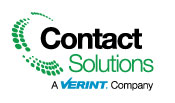 Except for teens hoping to pass their driving test, few people are thrilled to be interacting with the Department of Motor Vehicles. Or, for that matter, state and local government parking divisions.
Except for teens hoping to pass their driving test, few people are thrilled to be interacting with the Department of Motor Vehicles. Or, for that matter, state and local government parking divisions.
Renewing your driver’s license or registration, changing your address, transferring title to the purchaser of your used car or paying a parking fine – these interactions have always been considered necessary evils that typically involve long waits.
What if government transportation departments could turn a negative into a positive by replacing time-consuming, frustrating transactions and information requests with satisfying constituent engagements? After all, most people connect with the DMV at least annually to renew their car registration, and many commuters must pay monthly for their parking spots in city garages. Why not use these regular interactions to create a new perception of government: fast, efficient, mobile-enabled, personalized, and responsive?
The right solution can also help state and local governments save budget dollars, keep parking and licensing revenues flowing, encourage compliance with regulations and get the greatest value from scarce human resources.
Here are three ways to make a U-turn in constituent perceptions of the DMV and parking division.
1. Shift into higher gear with automated self-service
Given the choice, most people would rather take control of an interaction than wait on hold to be helped by a representative. Especially today, when most citizens are comfortable with a choice of voice and digital automation options. Advanced interactive voice recognition (IVR) systems make it easy for people to find information and complete tasks – such as paying a parking fine – without any intervention by a live representative – and the same holds true for web and mobile interactions. Plus, they can connect from their mobile device to avoid a trip to the local DMV office.
In one case, a state DMV adopted advanced IVR technology to improve constituent experience and encourage greater use of automated self-service. Since transition to the new IVR, automation rates improved 12.9% over the past four years, enabling more constituents to self-manage their DMV issues successfully without assistance from a live representative. Also, customer satisfaction jumped by more than 70 percent in the first three months.
2. Provide the personal touch
Today, with so many ways to personalize goods, services and experiences, the one-size-fits-all approach doesn’t cut it. This rule also applies to constituent care. Sophisticated IVR technology actually “learns” from repeated interactions with a constituent to personalize the interactions from their preferences and behaviors. Based on this history, the IVR “knows” to present specific information in the caller’s preferred language and can even shorten the authentication process. It’s like having a built-in GPS to guide each caller to the fastest route.
3. Go mobile
Although plenty of people still rely on the phone to get information from their DMV or parking authority, many more prefer to interact using a digital device, whether that’s a smartphone, tablet, or laptop. State and local agencies can please their constituents by providing convenient, popular digital alternatives to a phone call. Leading digital engagement cloud partners offer the ability to engage across mobile apps, mobile web, and websites in a persistent manner – one that mirrors the IVR experience and even improves upon it. People can choose customized self-service interactions or real-time messaging with an agent. For ultimate flexibility, they can start an interaction using the mobile app or mobile web, stop at any point, and resume where they left off – even using a different device or a different platform. That certainly beats standing in line.
Wow, all those flexible options for transportation interactions? You betcha!
Green light for government efficiency
Improved constituent engagement with the DMV, parking division, and other transportation functions (such as electronic tolling, ferry reservations, transit passes) benefits government in multiple ways:
- Reduced costs: automated self-service minimizes reliance on live representatives, and outbound notifications proactively drive compliance without costly mailing processes
- Increased revenues: easy, automated self-service encourages payment of parking fines, toll fees, licensing fees, etc.
- Image enhancement: cool technology (such as mobile apps) counteracts the traditional bureaucratic reputation of government agencies


